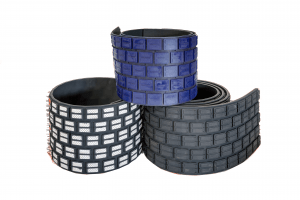
How to choose the most cost effective pulley lagging?
There are different types of pulley lagging using different materials. So, how do you assess which is the most cost effective pulley lagging option? This
Brain Industries is the expert in lagging for conveyor pulleys.
Our pulley lagging bonds perfectly to the shell of your conveyor pulleys to extend the life of your pulleys and provide better grip to the conveyor.
We manufacture an extensive range of lagging so we can meet all your needs.
• Ceramic, natural rubber-backed, lagging
• Ceramic, FRAS rubber-backed, lagging
• Polyurethane, natural rubber-backed, lagging
• Polyurethane hot cast lagging
• Natural rubber lagging
• FRAS rubber lagging
Brain’s, Australian made, pulley lagging is made to last longer and comes in a range of sizes. We make our lagging in thicknesses of 10mm, 12mm, 16mm and 20mm with a +/-0.3mm thickness tolerance.
The Brain Industries’ expert team can make your pulley lagging to order with a fast turnaround time.
Correct design and installation of lagging is critical otherwise it can create more damage to pulleys. Brain uses neoprene rubber backing for increased adhesion. Our bonding strength is above industry standard.
Fire resistant & anti-static (FRAS) grade rubber is also available. Brain Industries’ FRAS rubber is certified for use in underground mines.
• FRAS Rubber lagging approval No. T17-00187/0001
• FRAS Polyurethane lagging (red) approval No. T17-00558/0001
• FRAS Polyurethane lagging (green) approval No. T18-00674/0001
With Brain Industries’ lagging, you can also embed your company logo, as well as identification and batch details.
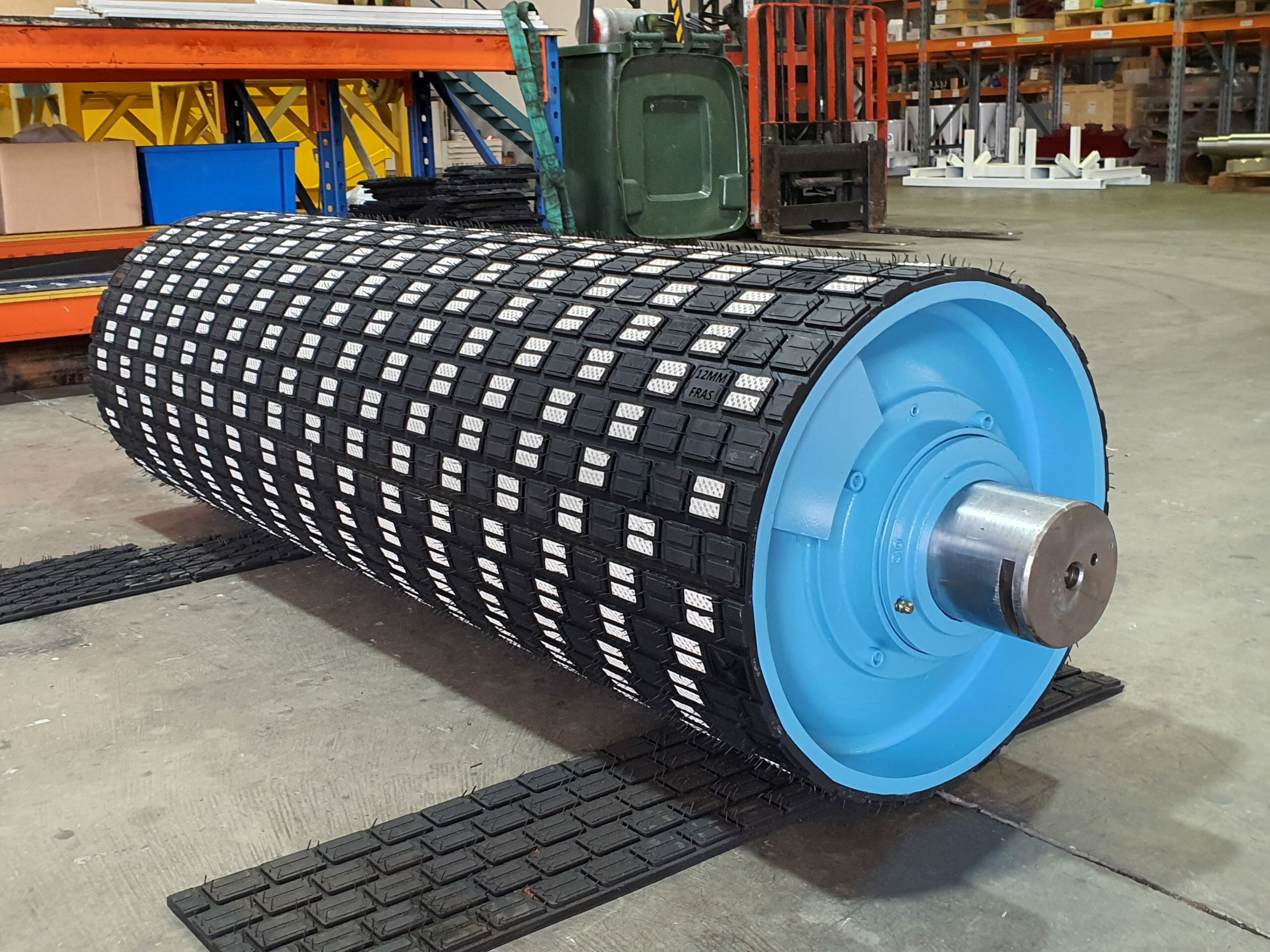
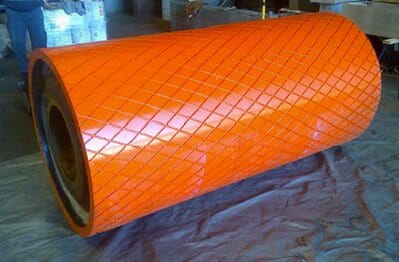
Brain makes four types of lagging in a range of sizes to suit your needs.

Polyurethane rubber backed pulley lagging is often used for problem wear pulleys. Polyurethane rubber backed pulley lagging costs more but lasts up to 5 times longer than traditional rubber lagging.

Polyurethane hot cast pulley lagging has a higher level of bond strength and Total Indicator Runout (TIR). It provides good abrasion resistance. Polyurethane hot cast pulley lagging costs more but lasts up to 7 times longer than traditional rubber lagging.
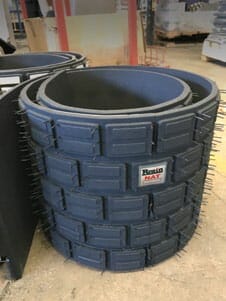
Natural rubber pulley lagging is the traditional and entry level lagging option. It costs less than other lagging types but has a lower service life – typically 1 year.

Ceramic rubber backed pulley lagging is low wearing and long lasting. Options include dimpled and smooth ceramic depending upon your needs. Brain Industries can also supply half-ceramic rubber backed lagging.
Hard, ceramic dimples grab the rubber of your conveyor for maximum grip to eliminate belt slippage. Smooth ceramic lagging is used for non-drive pulleys and for difficult, high wear, applications.
Different patterns are available – regular, arrow, diamond or square.
Ceramic rubber backed pulley lagging costs more but lasts up to 10 times longer than traditional rubber lagging.
Pulley lagging is a coating, cover or wearing surface applied to the shells of both drive pulleys and non-drive pulleys. It is designed to effectively disperse water and dirt, the same way a tyre does.
Lagging protects the pulley shell and conveyor belts from abrasion to reduce the risk of premature failure. It is also used to create an increase in friction between the pulley and the belt if there is a requirement for torque transfer through the pulley to the belt.
Pulley lagging extends the life of the pulley because the wearing surface (lagging) can be replaced for less cost than the pulley or conveyor belt.
Hot vulcanised lagging is steam cured on to the pulley. Cold vulcanised lagging is glued to pulley shell with adhesives.
There are a number of steps you can take in the design, operation and maintenance of lagging to protect it. Read our blog for more details.
Conveyor pulley lagging is a rubber strip that coats a conveyor pulley. It is designed to effectively disperse water and dirt, the same way a tyre does.
Polyurethane conveyor lagging outlasts rubber conveyor pulley lagging by a factor of between five and 10. It provides superior impact, cut and abrasive resistance compared to rubber.
But it can’t be put directly on a pulley in situ as there is no glue that can bond it to the steel shell. One option bonds polyurethane lagging to rubber which can then be bonded to the pulley in the field. The other option is to hot cast the polyurethane on to the shell in the factory.
Brain works with Lord Chemicals to perfect the bonding process. Our bond strengths are well above expected standard.
We supply the products in any colour (to match corporate colours) and have a logo embossed into it. They can be in thicknesses starting from 10mm to your required length.
Polyurethane is low friction and belt friendly meaning it better resists build up and it is also effective in dirt and water shedding. Polyurethane also makes for a quieter pulley operation. Hot cast lagging is particularly suited to new and OEM non-drive pulley applications.
All of these features mean reduced operating costs including reduced ongoing maintenance costs in addition to increased working life over rubber lagging. Reduced maintenance requirements also reduces risk to workers from inspection and maintenance duties.
With rubber lagging this process is required annually. Polyurethane means this activity is only done once every five years. To re-lag a pulley, one must stop the conveyor and remove the pulley, also stopping production. This exercise can be quite onerous and high risk, with pulleys sometimes 40 metres in the air. The stoppage requires deployment of cranes, scaffolding, elevated platforms, tag-out procedures, risk assessment and a myriad contract operating staff who may not usually work on site.

There are different types of pulley lagging using different materials. So, how do you assess which is the most cost effective pulley lagging option? This
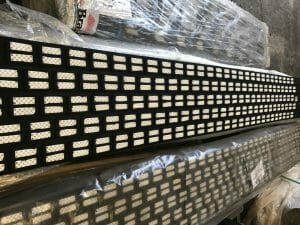
Strip conveyor pulley lagging can save mines (coal mines and hard rock or metalliferous mines) time and money. Down time is one of the biggest
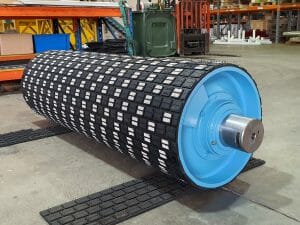
The life expectancy or service life of your conveyor pulley lagging depends on the operating environment, maintenance quality and frequency and how the equipment is
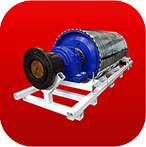
Custom made, quality, conveyor pulleys by Brain Industries makes materials handling easier.
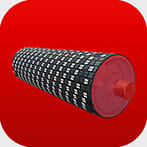
Brain Industries' Conveyor Pulley Lagging bonds perfectly to the shell of your conveyor pulleys to extend the life of your pulleys and provide better grip to the conveyor.
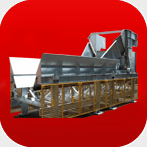
The Conveyor Dewatering Systems effectively remove water from the coal stream on any mine site. The systems are highly customisable and are designed to suit the exact needs of each customer

Brain Industries’ Fines Separation Units (FSU) allow you to better manage sludge and slurries.

Brain Ceramic Wear Liners help make conveyor chutes and material transfer points last longer.
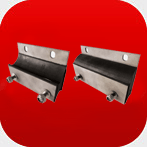
A clean conveyor belt is essential to protect one of your most expensive assets. The best way to ensure full belt width cleaning is to use Brain Mounting Cushions
After Hours
Nick (Production Manager)
M: +61 428 244 617
Tom (Lagging)
M: +61 421 845 737
Ernest (Sales Manager)
M: +61 429 916 097
Peter (Moda Marine)
M: +61 407 529 222
© Copyright [year] Brain Industries (International) Pty Ltd